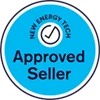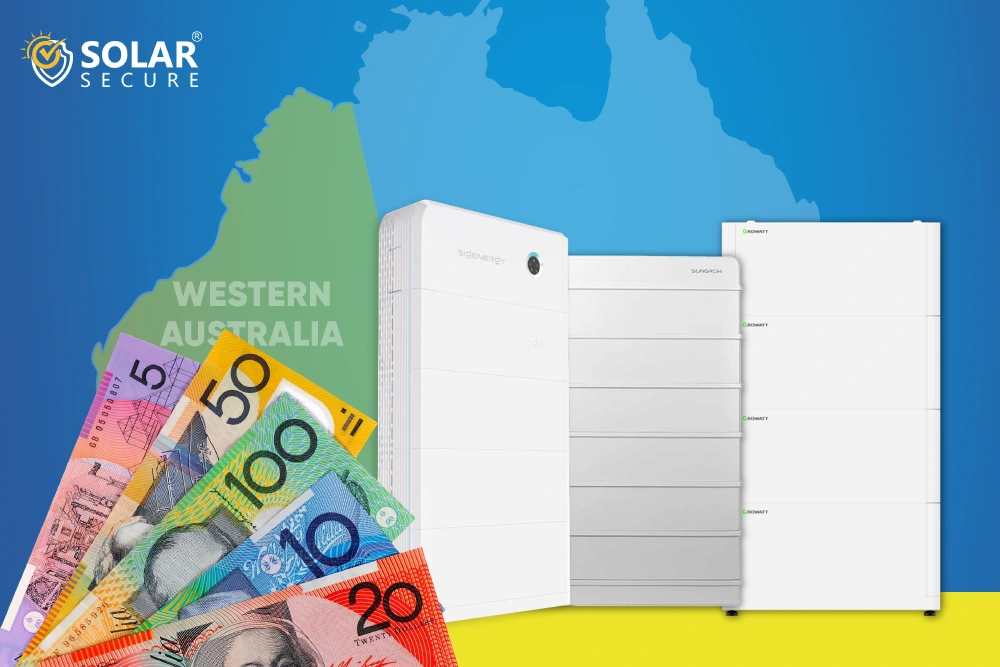Western Australia is undergoing a significant shift in its clean energy landscape, with the WA Government announcing revisions to its Residential Battery Scheme. As energy demands grow and the push for decarbonisation intensifies, home battery storage is becoming an increasingly attractive solution for households looking to save on energy costs and reduce their environmental footprint. The scheme’s revision reflects WA’s evolving energy needs and aims to provide better value, accessibility, and sustainability for residents. In this blog, we explore what the changes mean for homeowners, when they take effect, and how you can prepare.
What is the WA Residential Battery Scheme?
The WA Residential Battery Scheme, previously known as the Household Battery Storage Subsidy, was launched to encourage the uptake of home energy storage systems across the state. The initiative provides financial incentives or rebates to homeowners who install eligible battery storage systems, enabling them to store excess solar energy for use during peak hours, at night, or during blackouts.
The goal of the scheme is twofold :
- To reduce household electricity bills through energy self-consumption.
- To support grid stability by decreasing peak demand.
The program will enable around 100,000 WA households to store more of the renewable energy they generate, support network resilience, and reduce power bills. It combines the State Government’s $337 million WA Household Battery Rebate with the Federal Government’s $2.3 billion Cheaper Home Batteries initiative.
The batteries installed through this scheme will play a vital role in helping transform WA’s main electricity network. By linking home solar and batteries into Virtual Power Plants, households can contribute to a more flexible, efficient energy system, all while getting more value from their Distributed Energy Resources.
Who’s Eligible for the WA Battery Rebate?
To qualify, you must meet these conditions:
- Live in WA and have your main residence on the property
- Be a Synergy or Horizon Power customer
- Not be a government or commercial property owner (banks, telcos, mining).
- Your battery must be connected to rooftop solar
- Your system must be VPP-ready (able to connect and respond to energy signals).
- Must have ongoing internet connection for remote battery monitoring
Good news : Rental properties are eligible too (with landlord approval), and home-based businesses can apply if the home is also the main residence.
Why Is the Scheme Being Revised?
By 1 July 2025, the WA Government will be offering rebates for residential batteries of up to $1,300 for Synergy customers ($130 per kWh of battery capacity) and up to $3,800 for Horizon Power customers ($380 per kWh of battery capacity). With the assistance under the Federal program residents will be able to receive up to $5,000 and $7,500 respectively towards the cost of a 10kWh battery installation.
These revisions to the original battery scheme maintain both its spirit and budget of $337 million. The reasons for this change are to:
- Allow more households to access rebates and loans available under the WA Residential Battery Scheme
- Help provide a safe and sustainable level of battery uptake for industry
- Ensure greater stability and reliability of the WA electricity grid through the increased number of batteries.
No interest loans will also be available for up to $10,000 to households with a combined annual income of less than $210,000. Loan repayment periods will be up to 10 years. Loans can be used for batteries and new or upgraded equipment such as inverters and solar panels, as long as they are installed with a battery.
Who’s Eligible for Interest-Free Loan for Batteries (And Solar)
Households with combined annual incomes of under $210,000 will be eligible for a zero-interest loan from $2,000 to $10,000. This can be used to pay for batteries and can also contribute to solar systems that are installed at the same time as a battery. The loan is repaid over 10 years.
The simple payback period estimate given above does not account for capital costs, but if the zero-interest loan is used, the loan can be repaid with electricity bill savings from the battery, allowing the household to avoid paying capital costs.
What Kind of Batteries Are Eligible?
To be eligible, your battery must meet these specs:
- New, additional, or replacement system
- Minimum of 5 kWh usable capacity
- Must be on the CEC-approved product list
- Installed by a SAA-accredited installer
- Comply with Synergy or Horizon Power technical standards
Battery systems must also be VPP-capable and tested for reliable communication and integration with the grid.
When Do the Changes Take Effect?
The revised WA Battery Rebate Scheme will officially launch on 1 July 2025.
Existing homeowners with pending applications under the current scheme are advised to check with their installer or the WA Government’s Energy Policy WA website for transitional provisions.
From July 2025 onwards, new applications will be assessed under the updated guidelines.
Other Important Points
- The subsidy is not expected to be means-tested.
- Owners of existing battery systems should be eligible if they install a new battery, either in addition to the existing one or as a replacement.
- Additional capacity (minimum 5 kWh) can be added to an existing battery system that hasn’t received a rebate, assuming the total nominal capacity of the upgraded system doesn’t exceed 100 kWh.
- You need to connect the battery to a new or existing solar system.
- One federal government battery rebate per property. Owners of multiple properties can install a system at each assuming those other properties have solar panels.
- Despite the requirement to be VPP capable, off-grid installations can receive the rebate. Off-grid battery installations are exempt from the VPP compatibility requirement. An installation is considered “off-grid” if it is at least one kilometre from a mains grid line or where the cost to connect to the grid exceeds $30,000.
- Customers must be provided with technical details of the installation (including safety and installer accreditation details, along with potential energy savings and payback periods.
- The Clean Energy Regulator’s role in solar system inspections will be expanded to include inspections of battery installations
How to Prepare for the WA Battery Rebate
Rebate demand will likely exceed supply. Follow these steps to be installation-ready before the rush.
1. Install Solar (or Plan to Bundle)
Homes with existing solar will be in a stronger position to qualify. If you don’t already have panels, install them now or bundle them with a battery to maximise savings.
- Homes with existing solar are more rebate-ready
- Bundling solar and batteries can maximise savings
2. Choose a Hybrid Inverter
A hybrid inverter supports both solar input and future battery integration. It simplifies system expansion and avoids delays tied to grid approval.
- Hybrid inverters simplify battery integration
- DC-coupled setups can fast-track approval and installs
3. Pre-Order Your Battery
To secure stock and fast-track compliance, pre-order your battery in advance. With only 100,000 rebates available, early preparation ensures you’re at the front of the line.
With only 100,000 spots available, early pre-ordering secures stock.
4. Work With a Trusted WA Installer
The rebate requires WA-based installers, but a local company also offers:
- Faster turnaround
- Localised aftercare and warranty support
- Knowledge of WA compliance standards
Avoid national operators chasing rebate programs. Choose a provider with proven experience in WA like Solar Secure.
Conclusion
The upcoming revision of the WA Residential Battery Scheme presents an exciting opportunity for homeowners, renters, and communities across the state. With more tailored support, smarter technology requirements, and a strong push for wider adoption, WA is setting a benchmark for modern battery incentive programs in Australia.
Whether you're already solar-powered or just beginning to explore energy storage, now is the time to understand your options, plan, and make the most of WA’s support for a battery-powered future.
Stay informed, assess your eligibility, and connect with accredited solar installers like Solar Secure to ensure you're ready when applications open on July 1. The transition to smarter, cleaner energy starts now and this rebate could be the boost you’ve been waiting for.
Consult with Solar Secure now and take the next step toward smarter, more sustainable home energy.
For more information you can visit the official links mentioned below
https://www.wa.gov.au/organisation/energy-policy-wa/wa-residential-battery-scheme





